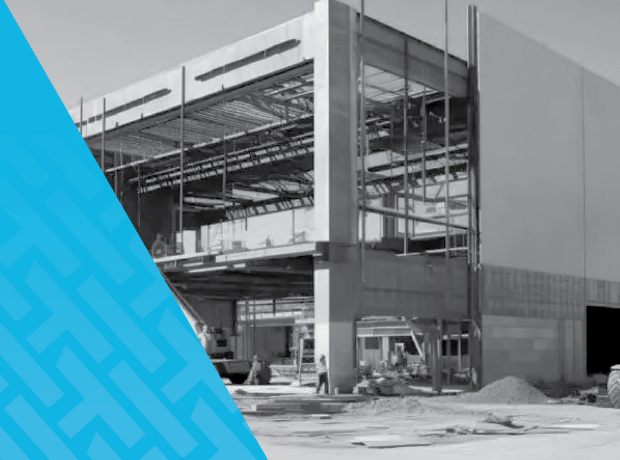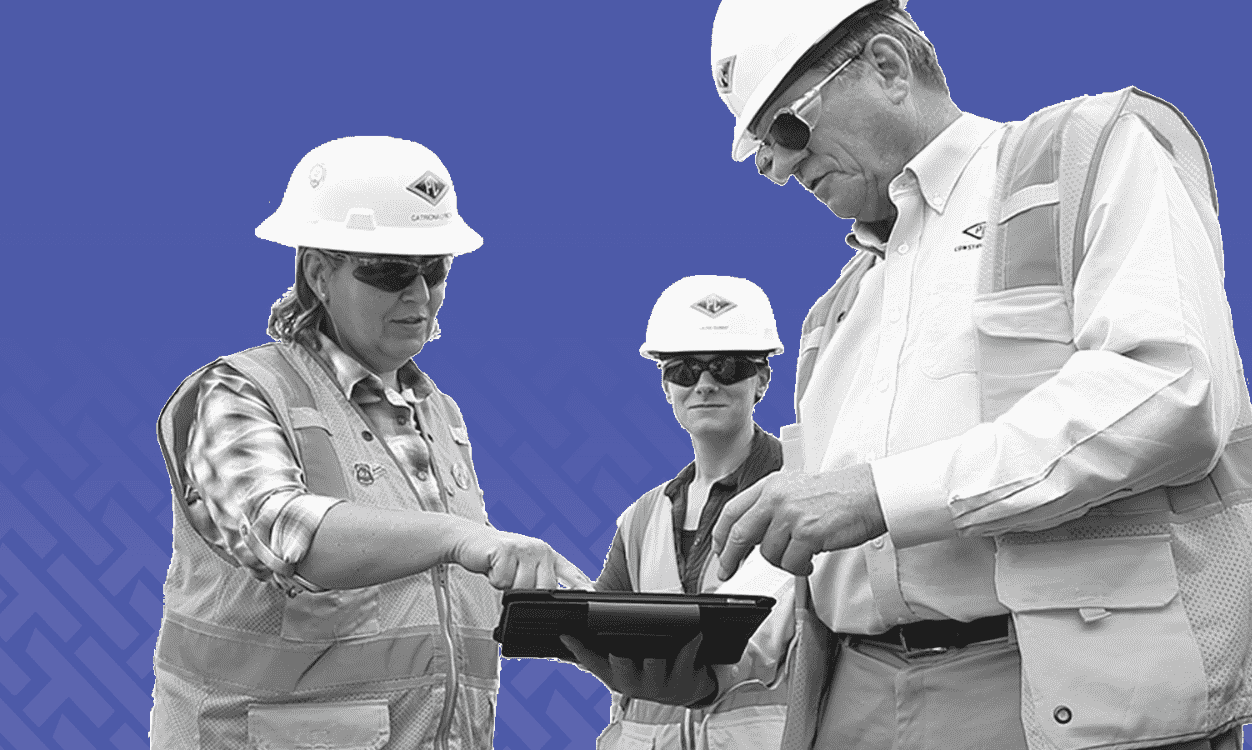Mission Critical: A Blueprint for Safety Excellence
In construction, 'mission critical' projects such as data centers and essential power facilities are distinguished not only by their vast scale but also by the imperative of their continuous operation. These endeavors extend well beyond standard safety and operational precision benchmarks, establishing a lofty standard for the entire industry. They demand intricate systems—spanning power, HVAC, and networking—to ensure operational reliability, reflecting a deep commitment to complex infrastructure rather than merely large structures. Such meticulous attention to the multifaceted aspects of these projects, with a particular emphasis on safety, underscores the importance of thoroughness in every project dimension.
Learning from these projects can help improve safety on all kinds of construction sites. By looking at how mission-critical projects manage their risks and ensure everything runs without a hitch, there is a lot to take back to any construction project, big or small. It is about making sure that the job not only gets done but gets done safely, with every worker knowing the plan and every safety protocol followed to the letter.
Decoding the Safety Framework
Mission-critical projects have higher stakes and more rigorous safety measures than general commercial construction projects. These projects demand not just compliance with standard safety norms but a leap toward more innovative and proactive safety measures. Specific safety practices distinguish mission-critical projects and serve to elevate safety standards across the construction industry.
-
Top-Level Safety: Safety on mission-critical sites is about preventing accidents. It is a proactive approach, starting with training workers to recognize hazards early and keeping everyone focused on preventing problems before they occur.
-
Advanced Risk Management: These projects use the latest methods, like technology that can predict potential accidents, ensuring everyone is aware of possible dangers in advance. This high-tech approach is about staying ahead of the risks.
-
Strict Protocols: Using technologies like facial recognition for access control and multi-step approval processes lowers the risk of mistakes, making sure the site is safe at all times. These strict rules help keep a close watch on who comes in and out and ensure the site is monitored all day and night, ready to act quickly if something goes wrong. The goal is to keep safety at the highest level, reducing dangers and protecting everyone on the site.
-
Safety Culture: It is not just about the equipment and rules; it is about the people. Building a culture where everyone takes safety seriously means creating an environment where workers actively look out for each other's well-being.
-
Cross-Site Learning: We will explore how the safety strategies used in mission-critical construction can set a new standard for safety on all sites. Sharing these best practices means improving safety for every worker, on every project.
Understanding and implementing the safety framework from mission-critical projects provides valuable lessons for all types of construction. By adopting these advanced safety measures, the construction industry can not only meet but exceed current safety standards, ensuring every worker's safety and well-being.
.png?width=700&height=300&name=Images%20for%20Mission%20Critical%20Article%20(700%20x%20300%20px).png)
Mission Critical Case Studies
Understanding the safety framework in theory is one thing but seeing it in action brings a whole new level of insight. In this section, we will dive into some real-life mission-critical projects, examining the safety protocols that were pivotal to their success. These case studies serve as a testament to the effectiveness of advanced safety measures and offer valuable lessons for construction projects of all scales.
Case Study 1: Flagship Data Center Campus Development
Project Overview:
-
- A multi-billion-dollar, decade-long development of a data center campus, serving as one of the flagship locations for a major technology company.
Safety Challenges:
-
-
Integration of systems between operational and under-construction buildings required detailed coordination to prevent injuries from operational buildings' electrical systems and ensure construction activities did not impact these buildings.
-
Complex electrical and mechanical systems demanded coordination for electrical energization, commissioning, and lockout/tagout activities, exceeding typical construction safety processes.
-
The close proximity of multiple underground facilities, including electrical power and network cables, necessitated careful planning.
-
Safety Protocols Implemented:
-
-
Site-specific work coordination and authorization processes were established to ensure the reliability of operational facilities.
-
Detailed electrical work permitting and commissioning approval processes were developed, utilizing technology for multi-step approval/authorization before starting work.
-
BIM (Building Information Modeling) and underground utility modeling were used to determine the proximity of underground systems prior to excavation or trenching work.
-
A robust near-miss identification and reporting program was implemented to identify events with low consequence outcomes but high potential consequences, allowing for the implementation of controls before major incidents occurred.
-
Outcome:
-
-
The protocols implemented were created after lessons learned from incidents. These processes were then adopted as standard procedures fleet wide. The robust near-miss program provided numerous opportunities to improve processes and protocols before serious incidents occurred.
-
Case Study 2: The Renewable Energy Power Plant
Project Overview:
-
- A groundbreaking cellulosic ethanol facility built from the ground up, featuring highly customized equipment and multiple chemical processes and sub-processes never run on a commercial scale. The facility was custom designed, requiring meticulous attention to detail during construction, startup, and operation.
Safety Challenges:
-
-
Beyond standard construction safety issues like electrical and fall protection, the facility faced process safety challenges including combustible dust explosions, flammable liquids and gases, toxic and caustic gases and liquids, and biological hazards from organisms.
-
Safety Protocols Implemented:
-
-
Specific, detailed work planning, permitting, and authorization processes were put in place, requiring multi-step procedures.
-
A culture of professionalism was established, positioning safety as a fundamental value.
-
Detailed emergency response plans were developed and regularly rehearsed, with operations paused or shut down following near misses for further planning and training.
-
Outcome:
-
-
A culture of safety and open, honest communication fostered an environment conducive to productive conversations and innovation. The proactive identification of lower consequence incidents and near misses prevented major safety incidents. Given the facility's uniqueness, a culture of learning and continuous improvement was established, ensuring any opportunities for learning and improvement were captured and implemented.
-
Learning from the Frontlines
These case studies not only highlight the meticulous safety planning and execution required for mission-critical projects but also underscore the importance of proactive safety management. By analyzing these projects, we gain insights into the practical application of safety protocols and how they can be adapted to enhance safety on any construction site. The lessons learned here are invaluable, proving that with the right focus and tools, the construction industry can achieve remarkable safety standards, benefiting projects across the spectrum.
Safety Paradigm Transfer: Bringing High Standards to Everyday Sites
The rigorous safety measures honed in the world of mission-critical construction offer a wealth of knowledge that can significantly impact the broader construction industry. By examining how these protocols can be translated to standard commercial construction projects, we can uncover opportunities to elevate safety standards across the board. The following explores the practical application of these high-level safety practices in everyday construction environments:
-
Predictive Safety Measures: Just like mission-critical projects employ advanced analytics to predict and mitigate risks, commercial projects can also benefit from similar technologies. Implementing predictive tools can help identify potential safety issues before they become hazards, making construction sites safer and more efficient.
-
Culture of Safety: The intensive safety culture on mission-critical projects, where each team member's voice on safety concerns is valued, sets a blueprint for professionalism in safety across all construction sites. This approach underlines that safety is not just a practice but a professional standard, embedding responsibility and vigilance in the project's ethos. By instilling this mindset, where safety and professionalism are intertwined, commercial projects can elevate their safety compliance and worker engagement to new heights, making safety a core aspect of professional conduct for every team member.
-
Advanced Training and Education: The comprehensive training programs developed for mission-critical construction workers, focusing on the latest safety protocols and technologies, can be adapted for the broader workforce. Offering workers on commercial projects access to this level of training can raise the bar for safety knowledge and practices industry wide.
-
Emergency Preparedness: The elaborate emergency response strategies in place on mission-critical projects provide a template for commercial projects to develop their own robust emergency plans. This ensures that, in the event of an incident, teams are well-prepared to respond swiftly and effectively, minimizing risks and potential damage.
Transferring the safety paradigm from mission-critical to commercial construction does not just promise to reduce accidents and injuries; it represents a shift towards a more comprehensive approach to construction safety. This transition underscores the industry's capacity for innovation and improvement, proving that the principles of safety excellence are universal and applicable across all types of construction projects.
.png?width=700&height=200&name=Images%20for%20Mission%20Critical%20Article%20(2).png)
Expert Opinions: Enhancing Construction Safety Through Mission-Critical Insights
In construction, the expertise gleaned from mission-critical projects is invaluable, especially when it comes to safety. We spoke with a seasoned expert in mission-critical construction safety, Chris Gitch, CSP, who shared his perspective on how the sophisticated safety measures employed in high-stakes projects can benefit the wider construction industry.
-
Universal Safety Protocols: Chris points out that many of the safety protocols developed for mission-critical projects are universally applicable. "One of the key takeaways is the importance of a proactive safety culture," Chris explains. "This means not just following safety protocols but actively looking for ways to improve them. For example, regular safety audits and worker feedback sessions that are standard in mission-critical projects can be easily adopted by commercial projects to identify and mitigate risks more effectively."
-
Technology and Training: Another area where Chris sees significant transferability is in the integration of technology and comprehensive training. "The application of technology to coordinate work tasks and assist in hazard identification is transformative. Systems that enable real-time communication and scheduling, along with tools that help identify potential safety risks before they materialize, can be just as impactful on a small commercial site as on a large data center build."
-
Risk Assessment and Management: "Mission-critical projects excel in risk assessment and management, employing sophisticated software to predict potential issues before they arise," says Chris. This approach can be adapted to smaller projects, using scaled versions of the software, or incorporating regular risk assessment meetings into the project timeline. "It's about anticipating problems before they happen, regardless of the project size."
-
Safety as a Shared Responsibility: Chris emphasizes safety as a shared duty, crucial at every level from executives to front-line workers. In mission-critical projects, this collective approach empowers everyone to identify and suggest safety improvements, setting a high bar for performance and precision. Adopting this mindset across all construction projects can enhance safety standards and ensure tasks are performed correctly, serving as a strong model for the industry."
In his concluding thoughts, Chris imparts a compelling vision: “The lessons we have learned from the most stringent safety environments in construction can set a new standard across the board. It is not just about making individual sites safer but elevating the safety culture of the construction industry.”
.png?width=700&height=200&name=Images%20for%20Mission%20Critical%20Article%20(1).png)
Impact on Commercial Safety
The adoption of safety practices from mission-critical construction projects can improve safety standards across the entire construction industry. By integrating these high-level safety protocols, commercial construction projects can benefit from:
-
Reduced Incidents and Injuries: Implementing rigorous safety measures can significantly decrease the number of workplace incidents and injuries, leading to safer construction sites.
-
Enhanced Worker Morale: A strong focus on safety improves workers' confidence in their workplace, leading to higher morale and productivity.
-
Cost Savings: Improved safety can lead to cost savings by reducing the number of lost workdays due to injuries and lowering insurance premiums.
-
Reputation Boost: Companies that prioritize safety are seen as industry leaders, attracting more business and better talent.
The ripple effect of adopting mission-critical safety standards can elevate the entire construction sector, promoting a culture where safety is not just a compliance requirement but a cornerstone of every project.
Building a Safer Tomorrow
Exploring safety standards on mission-critical construction sites reveals a meticulous safety framework. This framework not only anticipates risks with advanced technology and training but also fosters a culture of shared responsibility, empowering every worker and setting a new standard of excellence. The insights from industry experts like Chris Gitch, CSP, further illuminate the path, showing us how the principles refined in the high-stakes world of mission-critical construction can be seamlessly integrated into commercial projects, promising not only a reduction in accidents and injuries but also fostering a safer, more productive workplace.
FAQs
Mission-critical construction projects are those that involve essential facilities like data centers and power plants, requiring continuous operation. These projects are distinguished by their vast scale, intricate systems (including power, HVAC, and networking), and a high standard of operational reliability and safety.
Safety standards on mission-critical projects are more rigorous, involving advanced risk management, strict protocols, and a proactive approach to preventing accidents. These projects employ innovative safety measures, such as predictive technology and comprehensive training, setting a higher safety benchmark industry-wide.
Yes, many of the safety practices and protocols developed for mission-critical projects are universally applicable and can elevate safety standards across all construction projects. This includes adopting a proactive safety culture, integrating technology for hazard identification, and ensuring a collective approach to safety responsibility.
Advanced safety measures include using technology to predict potential accidents, facial recognition for access control, detailed work permitting, and a robust near-miss identification program. These measures help manage risks more effectively and maintain high safety levels on site.
Focusing on safety leads to reduced incidents and injuries, enhanced worker morale, cost savings, and a reputation boost for companies. By adopting mission-critical safety standards, the construction industry can improve overall safety, productivity, and quality of work.
Building a culture of safety involves creating an environment where every team member takes safety seriously and looks out for each other's well-being. This can be achieved through comprehensive training, active participation in safety protocols, and open communication about safety concerns and improvements.
Technology plays a crucial role in improving safety by enabling predictive safety measures, facilitating real-time communication, and assisting in hazard identification. It allows for more effective risk management and helps prevent accidents before they occur.
Safety measures can be scaled down and adapted for smaller projects through regular risk assessments, employing technology for hazard identification, and fostering a proactive safety culture. Even basic versions of these practices can significantly enhance safety on smaller sites.





